Flowers, flowers, everywhere – sweeping in a bee-buzzed carpet of colour across this field margin by the Angus coast between Arbroath and Montrose.
I was hiking the spectacular clifftops near Auchmithie, and the adjacent Seahills Farm is working closely with the RSPB to help threatened wildlife by sowing a mixture of seed-bearing plants that recreates habitats once common on farms.
This creates a valuable food resource, providing insects and seeds throughout the year to the benefit of birds such as corn buntings, grey partridges and finches.
It is a wonderful example of sustainable food production and wildlife co-existing in harmony and the resultant sea of colour sent the spirits soaring.
The path edges of the coastal walk were also ablaze with wildflowers, including musk-mallow with its blousy pink petals and the stunning purple-blue blooms of viper’s-bugloss.
Summer breeze
I was delighted to find greater knapweed, which exhibits an intricate thistle-like lilac flowerhead, comprising of whorls and threads that danced and shimmered in the summer breeze.
Red campion was also abundant, which must classify as one of our longest flowering plants, because I recall even finding them in bloom at Christmas time on these clifftops.
Out at sea, rafts of guillemots and razorbills bobbed in the water, and kittiwakes wheeled by the cliff faces.
On a promontory, it was encouraging to see reasonable numbers of kittiwakes and guillemots nesting, with their endearing fluffy youngers huddled on rock ledges.
Seabird challenges
Our seabirds are currently experiencing a torrid time due to a serious outbreak of Avian Influenza, but at least here on the Angus cliffs, one small colony of kittiwakes and guillemots was coping with the impact of the trauma.
A sharp-winged pirate of the sky soared high above me and uttered a high-pitched chatter, and it was soon joined by a compatriot.
It was a pair of peregrines – a mother and her youngster, and they tumbled in the air, diving and rising and even making mock attacks on flying kittiwakes.
They appeared to be doing this for fun, but there was a serious side to these aerial acrobatics, for the mother was teaching her youngster how to stoop and dive at prey – an invaluable life lesson that will ensure survival.
These cliffs are a rich larder for peregrines because there is an abundance of prey here throughout the year, especially rock doves and jackdaws.
I recall last year on clifftops near Stonehaven finding a mound of black feathers on a grassy hummock, which was the remains of a jackdaw that had been plucked from the sky by a marauding peregrine.
I imagine young kittiwakes will be at risk when first on the wing, but I suspect guillemots and razorbills are too big and strong for a peregrine to tackle.
The briny breeze blew fresh, and the sea churned below on exposed rock shelves and pebbly beaches.
The chatter of the peregrines rose in the air once more, and the pair swooped low over the white-flecked waves on powerful wings, until their calls were soon spirited away by the sea wind.
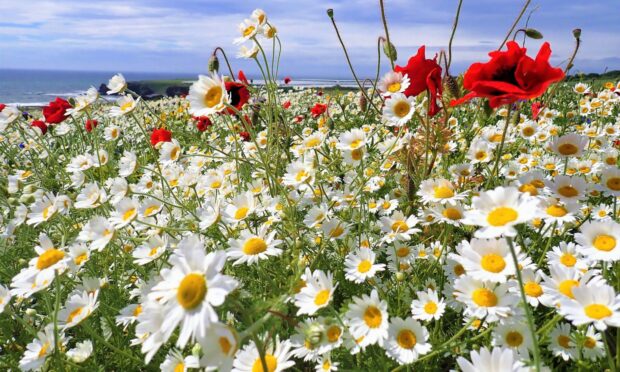
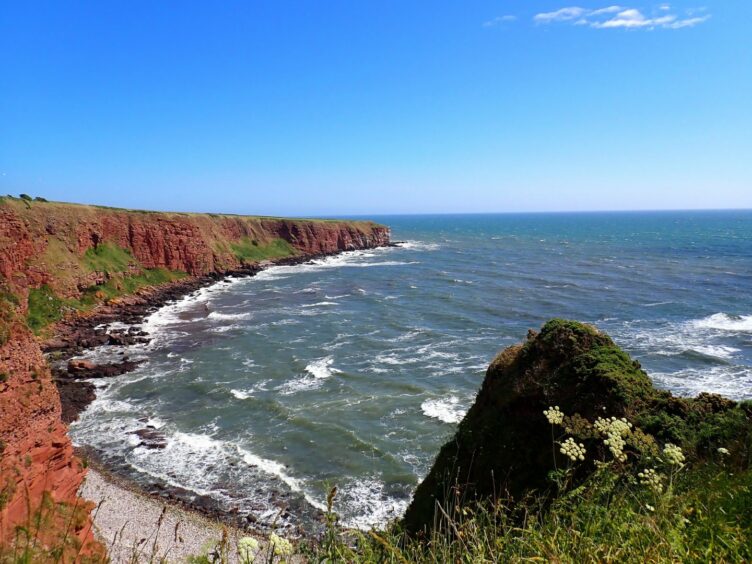
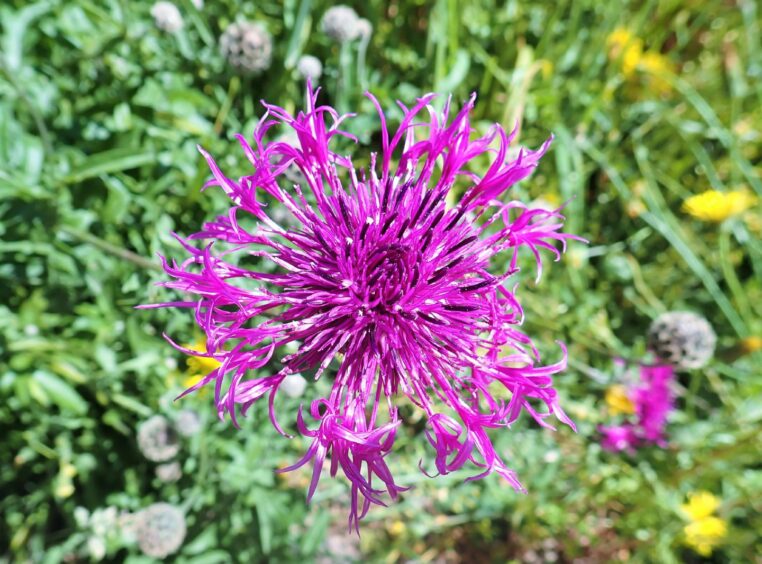
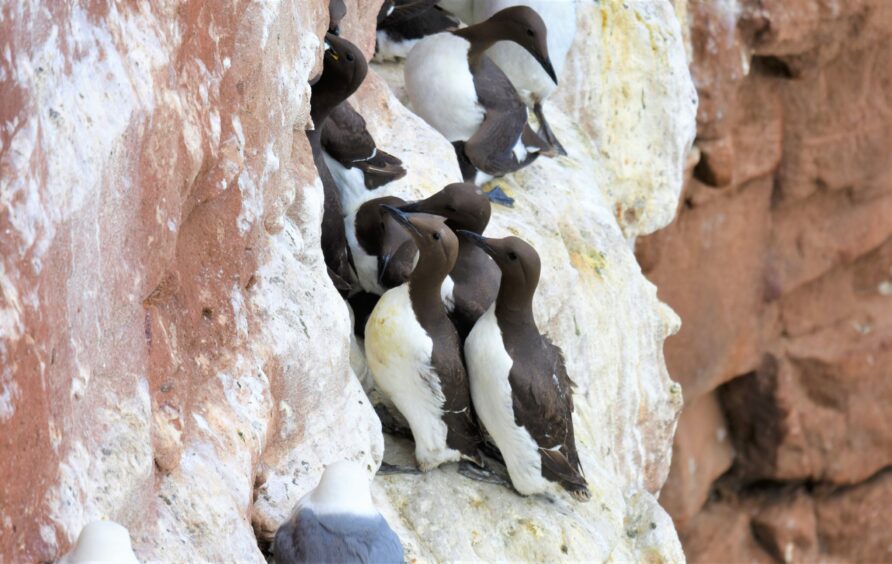
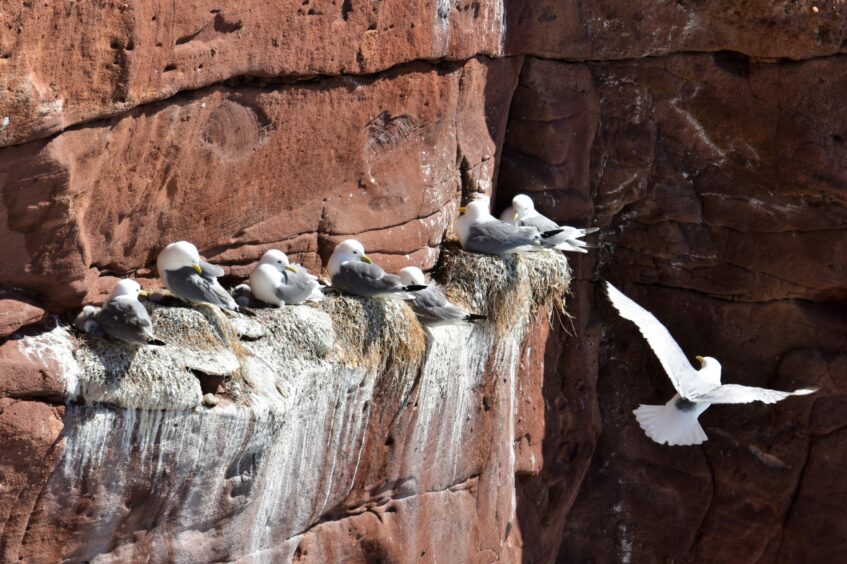










Conversation